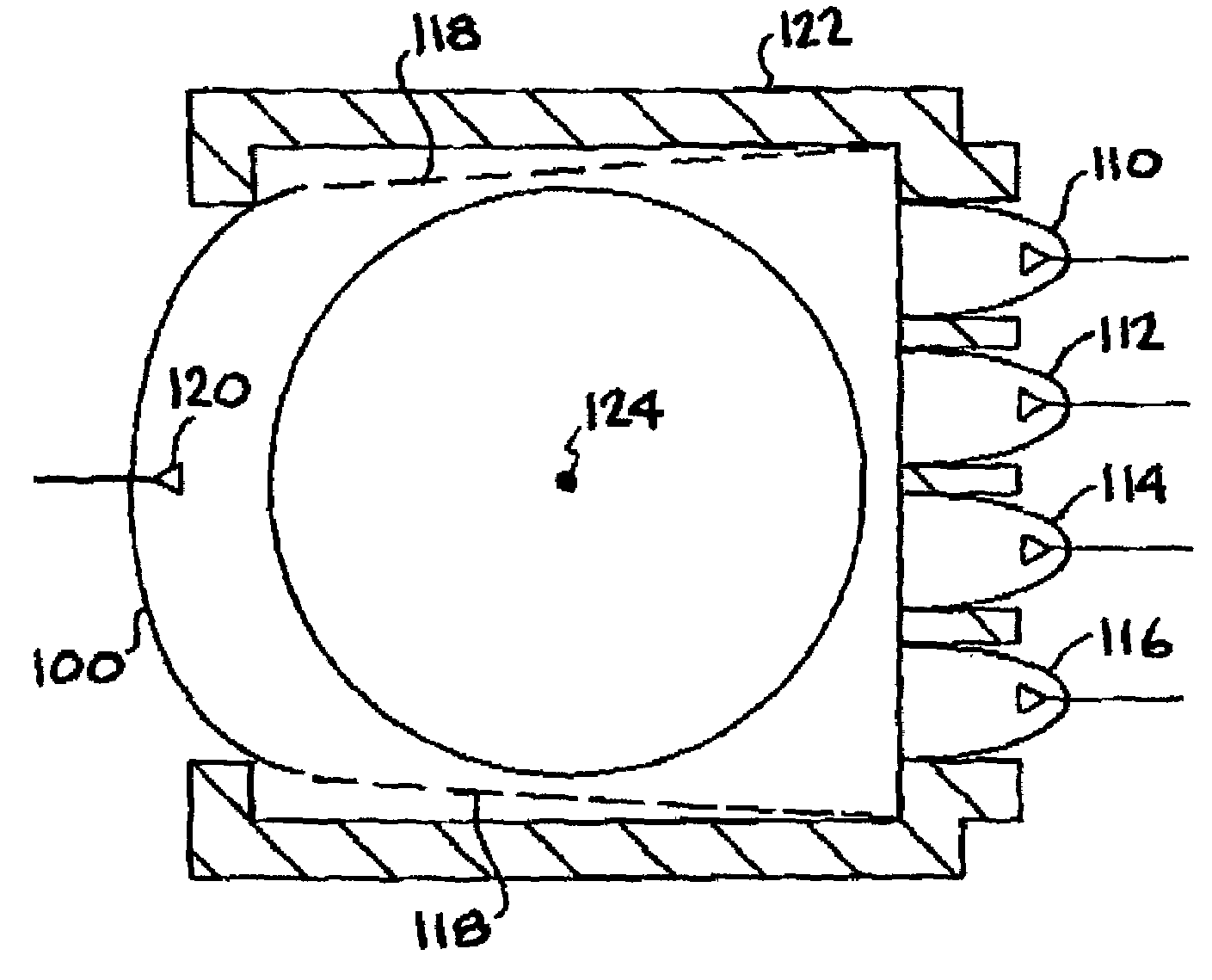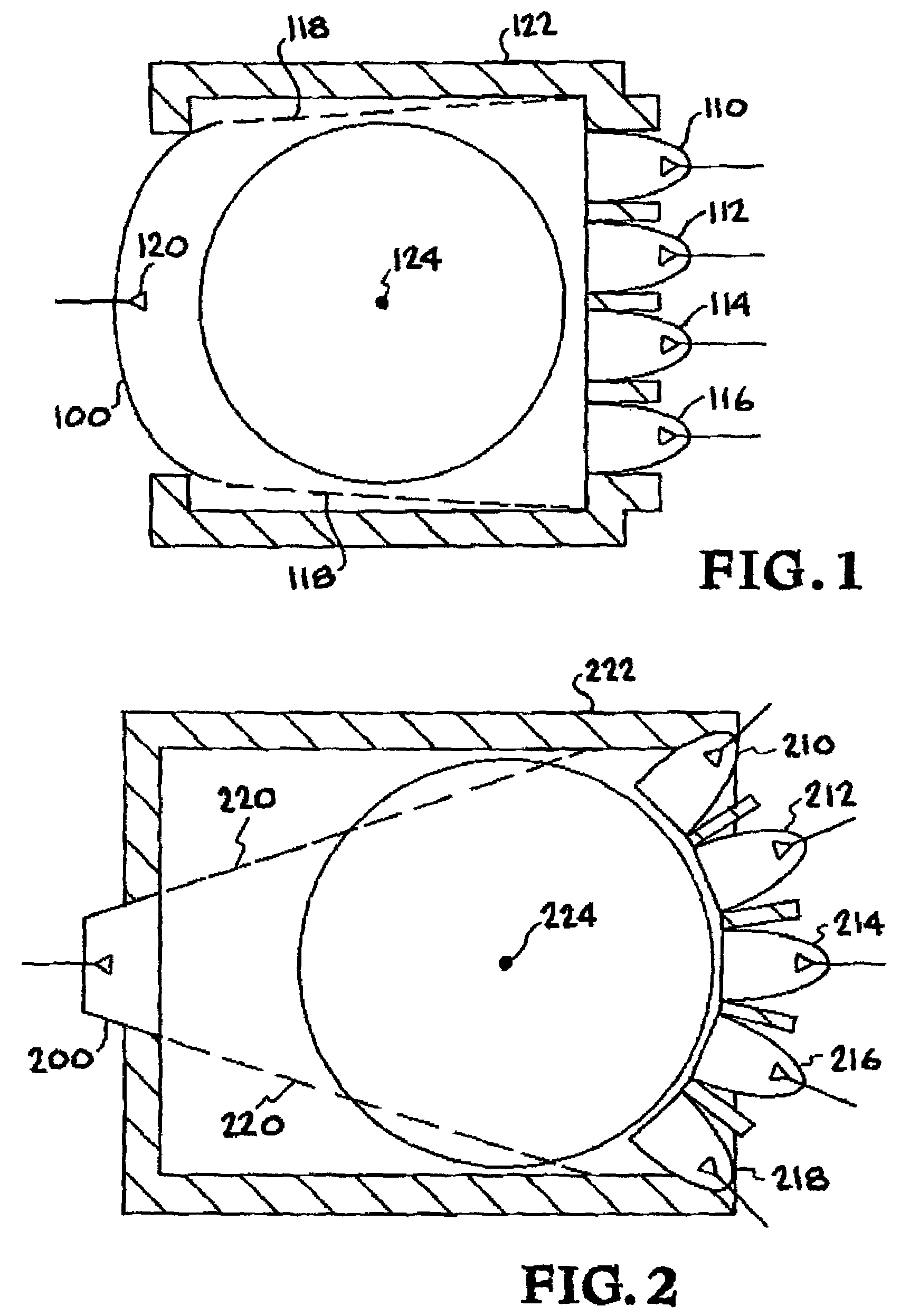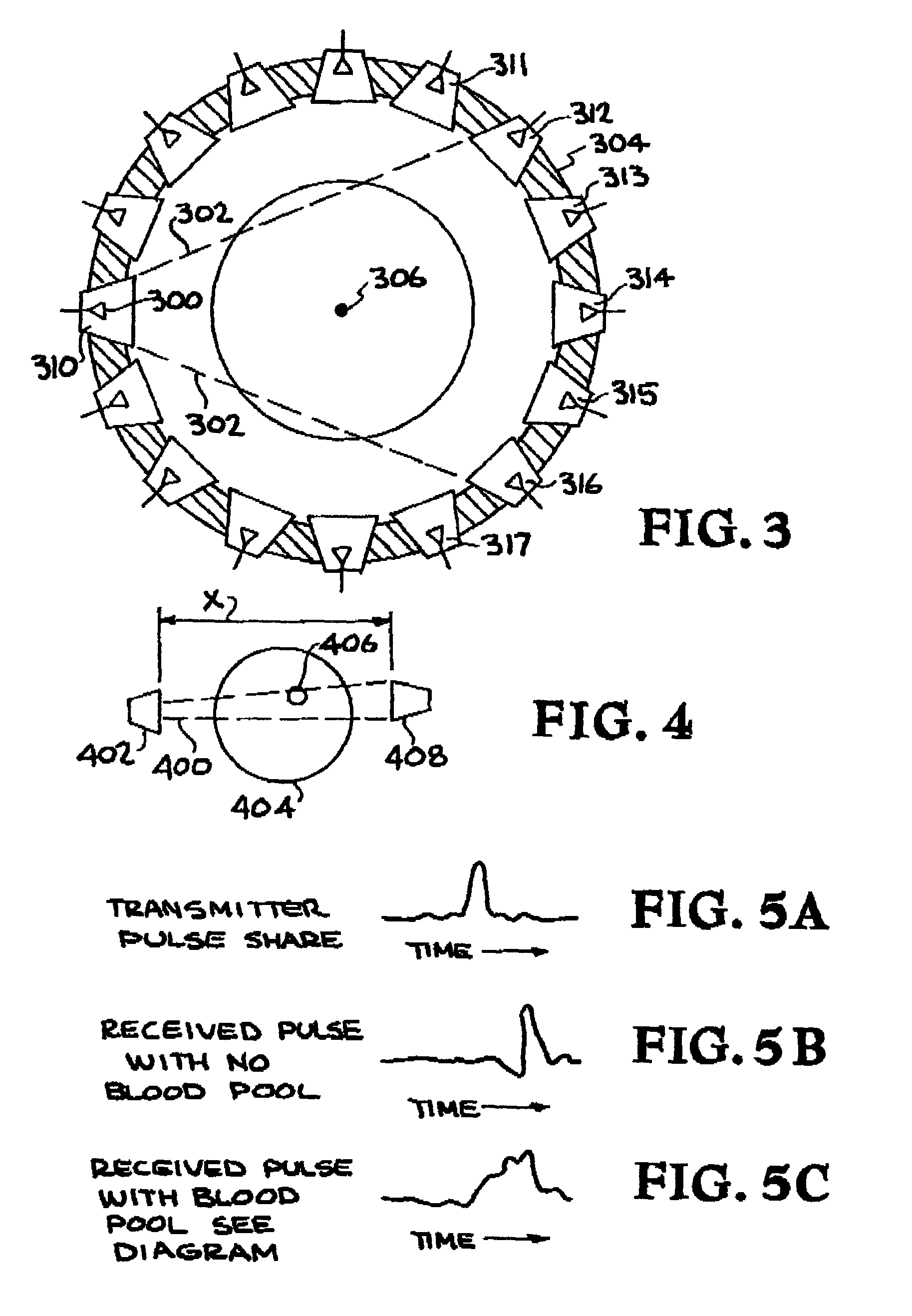Microwave hemorrhagic stroke detector
a microwave hemorrhagic and detector technology, applied in the field of diagnosis of stroke, can solve the problems of high cost of computed tomography and magnetic resonance imaging, severe physical impairment or death, and fatal internal bleeding in the brain, so as to reduce the long term damage of stroke, eliminate unnecessary scans, and save many lives
- Summary
- Abstract
- Description
- Claims
- Application Information
AI Technical Summary
Benefits of technology
Problems solved by technology
Method used
Image
Examples
Embodiment Construction
[0024]The invention is a low cost, non-invasive, portable device for screening patients for the presence, approximate location, approximate size and rate of the internal bleeding within the brain. The device could be used at the scene of the injury or stroke incident by the paramedic or first responder in a properly equipped ambulance, in the emergency room (ER), in local clinics and in hospital intensive care units (ICU) and operating rooms (OR). It will allow rapid testing of patients prior to CT or MRI scanning; eliminating unnecessary scans, or could possibly replace the use of CT for examining a certain class of patients. It has the potential for saving many lives and reducing long term damage to head injury victims by reducing the time of diagnosis. It will also facilitate and reduce the cost of repeated scans to monitor the size and rate of growth of a blood pool within the head. It will greatly reduce the medical costs associated with testing and treating stroke victims, as ...
PUM
 Login to View More
Login to View More Abstract
Description
Claims
Application Information
 Login to View More
Login to View More - R&D
- Intellectual Property
- Life Sciences
- Materials
- Tech Scout
- Unparalleled Data Quality
- Higher Quality Content
- 60% Fewer Hallucinations
Browse by: Latest US Patents, China's latest patents, Technical Efficacy Thesaurus, Application Domain, Technology Topic, Popular Technical Reports.
© 2025 PatSnap. All rights reserved.Legal|Privacy policy|Modern Slavery Act Transparency Statement|Sitemap|About US| Contact US: help@patsnap.com



